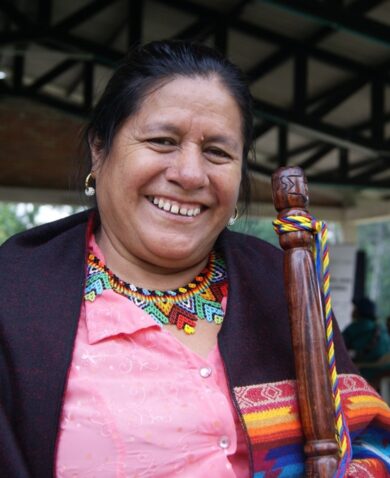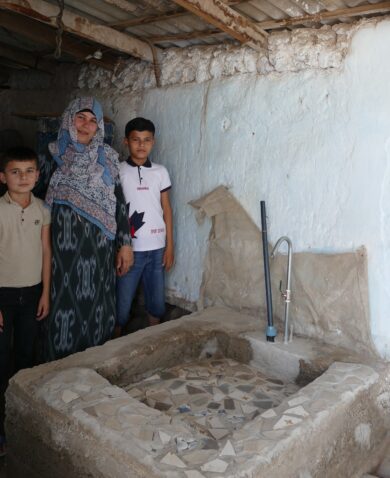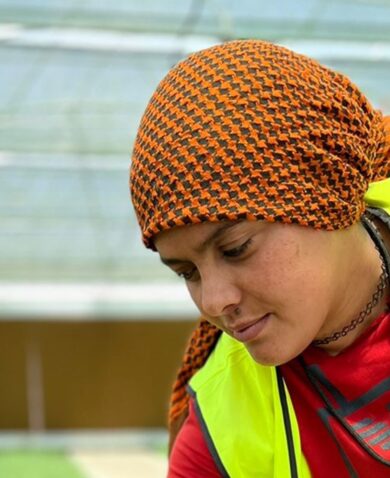
Creativity and Innovation Can Save the Day
April 21, 2022 | 5 Minute ReadInnovation & Investment Senior Advisor Lauren Behr discusses the urgency for innovation and the difficulty of scaling it to respond to today’s challenges on this World Creativity & Innovation Day.
With today’s incredible advancements in technology, medicine, and industry, there has never been a better time in history to be alive. Yet universal gaps in income and wellbeing persist to a staggering degree, especially compared to the relative wealth and resources generated by the world economy. According to reporting by the World Economic Forum, the richest 10% of the global population now owns 76% of wealth, while the poorest half owns just 2%. That is nearly 4 billion people trapped in poverty.
Recent analysis suggests there has been a paradigm shift in economics, which recognizes that extreme inequality everywhere constricts economic growth and leads to greater instability. In part, this happens due to the obstructed supply of talent, ideas, and capital. With the alarming consequences of wealth and income gaps, the pandemic, and a climate crisis unfolding before us, we are confronted daily with the choice of either maintaining the status quo or organizing to usher in a more hopeful, daring future. For those dissatisfied with the status quo, what kind of change would even matter? The world needs more creative and brilliant minds mobilized to address our biggest problems, and to help reverse the trends of inequality that limit social and economic power.
Promoting Innovation
As global development practitioners, we witness firsthand how equitable access to healthcare, education, and employment closes income gaps and promotes cohesion and safety in communities. Innovation plays a critical role in magnifying these positive outcomes. At Chemonics, we recognize innovation as the process of creating value through solutions that have the transformative ability to accelerate change. To best enable innovation and scale, Chemonics taps into our nearly 50 years of experience to promote community-led design, creative problem-solving, and calculated risk-taking via a few trusted methodologies, and to provide pathways to scale innovative solutions through commercially viable business models, partnerships, capital, and local ownership. Through our programs and partnerships, we first help community stakeholders recognize their own potential and power as innovators by co-designing solutions through their lived experiences. We then help them bridge the gap between the creative freedom of ideation, design, and testing, and the sustaining rigor that drives funding, partnerships, and results. Once innovation is validated through successful piloting, we empower innovators to build their own vision of impact and the roadmap to achieve it based on the opportunity for scale that most aligns with their values and goals to accelerate change.
Chemonics is deploying these approaches to innovate around everything from education in Tajikistan, to sustainable soy in South America, to last-mile health commodity distribution in Africa. On the Cargill Land Innovation Fund, for example, Chemonics is supporting the scale up of a Brazilian startup monitoring the impacts of sustainable practices for carbon sequestration using NASA technology.
Through corporate partnerships like our work with the UNLEASH Global Innovation Lab, Chemonics also supports the acceleration of early-stage ventures with the potential to disrupt entire sectors, like transforming tourism in South Asia through access to more inclusive and equitable travel. This kind of work shows that innovation is an asset for communities with access to the least opportunity — not just a buzzword.
When applied to the global-development context, co-creation with local stakeholders and community-led design yields results. Global development and sustainability practitioners know community-led design is not only the “right” thing to do, but also the effective thing to do. We know that co-creation demonstrates our trust to community representatives, and it fosters ownership within local private and public sector partners that have a critical role in resolving community problems. The development sector knows well that applying innovation methods dramatically increases the adoption and impact of solutions by ensuring they are tailored to respond to user needs. In short, we know that when innovation is harnessed with direction, it works to benefit those who need it the most.
It is with these types of opportunities to exercise true social power, through problem-solving that empowers individuals to be the experts of their own experiences, that gives them agency, which translates into enduring change. This all points to the need for a more focused effort by every member of the development sector on expanding access to innovation methods and programs. This can be done through a myriad of ways:
- If you are a donor, create the space for risk and failure for innovation on the programs you fund to allow the possibility that a creative mind is waiting to be discovered and empowered to launch a disruptive new idea.
- If you are an implementing partner, commit to applying innovation methods with stakeholders in your programs, and lead by example to make the power of user-centered design visible to your clients, partners, and peers.
- If you are a private sector partner or investor, find worthy programs to deploy your invaluable funds, resources, and time that bring locally led solutions to life.
Systematizing Scale
Innovations that are worth scaling and sustaining need to have the right resources and supportive business structures in place from the outset. Otherwise, the most promising ideas die on the vine. Well before programs close and donor funding ends, and even before we have the goal of creating something new, we should ask ourselves: how will this innovation survive? While there are many excellent resources available about how to develop strategies for scale, there is still a basic gap in knowledge or experience about how to bring innovations to market — and keep them there.
The sector needs to couple co-creation with the necessary follow-on programs that continue equipping innovators, entrepreneurs, and new ventures with the tools, partnerships, and the capital they need to thrive. We need to focus far more attention and resources on validating innovative solutions and building viable business models that support them. Chemonics has spent decades empowering local innovators by applying business rigor to validated solutions. For example, Chemonics supported the launch and scale of agricultural startup Akorion on our Uganda Feed the Future Uganda Commodity Production and Marketing Activity. Together, we designed and deployed the Ezy-Agric application that created more than 8,100 youth jobs, provided market access information to more than 400,000 farmers, and enabled 130,000 farmers access to more than $59 million in crop production loans. On the Aflasafe Technology Transfer and Commercialization (ATTC) program, we took a different approach by supporting the commercialization of an all-natural product combating cancer-causing fungi in crops and mobilized $6 million with two African firms that enabled regional licensing to 12 countries in Africa.
By assessing and planning for commercial viability and long-term sustainability, we help ensure that each locally led solution has a greater chance at success. In our programs, Chemonics serves as a catalyst that facilitates linkages between market actors and strengthens local innovation ecosystems. We also mobilize the private sector to support scale by identifying shared value, de-risking investment through blended-finance mechanisms, and brokering multi-stakeholder partnerships. Social innovations, particularly those that originate from donor-funded programs, need the same rigorous business analysis and planning as any other product or service a consumer might buy. Social innovations, particularly those that originate from donor funding, need business plans and models that validate product-market fit and that ensure commercial viability can be attained. Innovators need help getting there, particularly with:
- Identifying a long-term vision of impact, and the commitments and resources required to achieve it
- Validating the impact of their innovation and continuously improving upon design
- Mapping the competitive landscape and the innovation’s unique value proposition
- Developing a go-to-market strategy that considers the necessary requirements for minimum product viability, expediency, and cost efficiency without compromising impact
- Systematizing management and efficiency to facilitate operations, production and delivery, marketing, and more
- Mobilizing strategic partnerships and capital that catalyze growth and key inflection points
Recognizing the need to bring more awareness to the remedial powers of innovation and scale, Chemonics this month published the Innovation Playbook, a guide and resource for innovation that, through global case studies, examines various methodologies and scaling practices that have already had tremendous impact — and that promise more on the global level. Social innovation that mobilizes more creative minds to design and scale validated solutions is one option to more equitably distributing social and economic power. But there are many root causes of inequality and possible solutions to explore. As the World Inequality Lab puts it, inequality is a societal choice after all, not an inevitability.
Posts on the blog represent the views of the authors and do not necessarily represent the views of Chemonics.





























































































